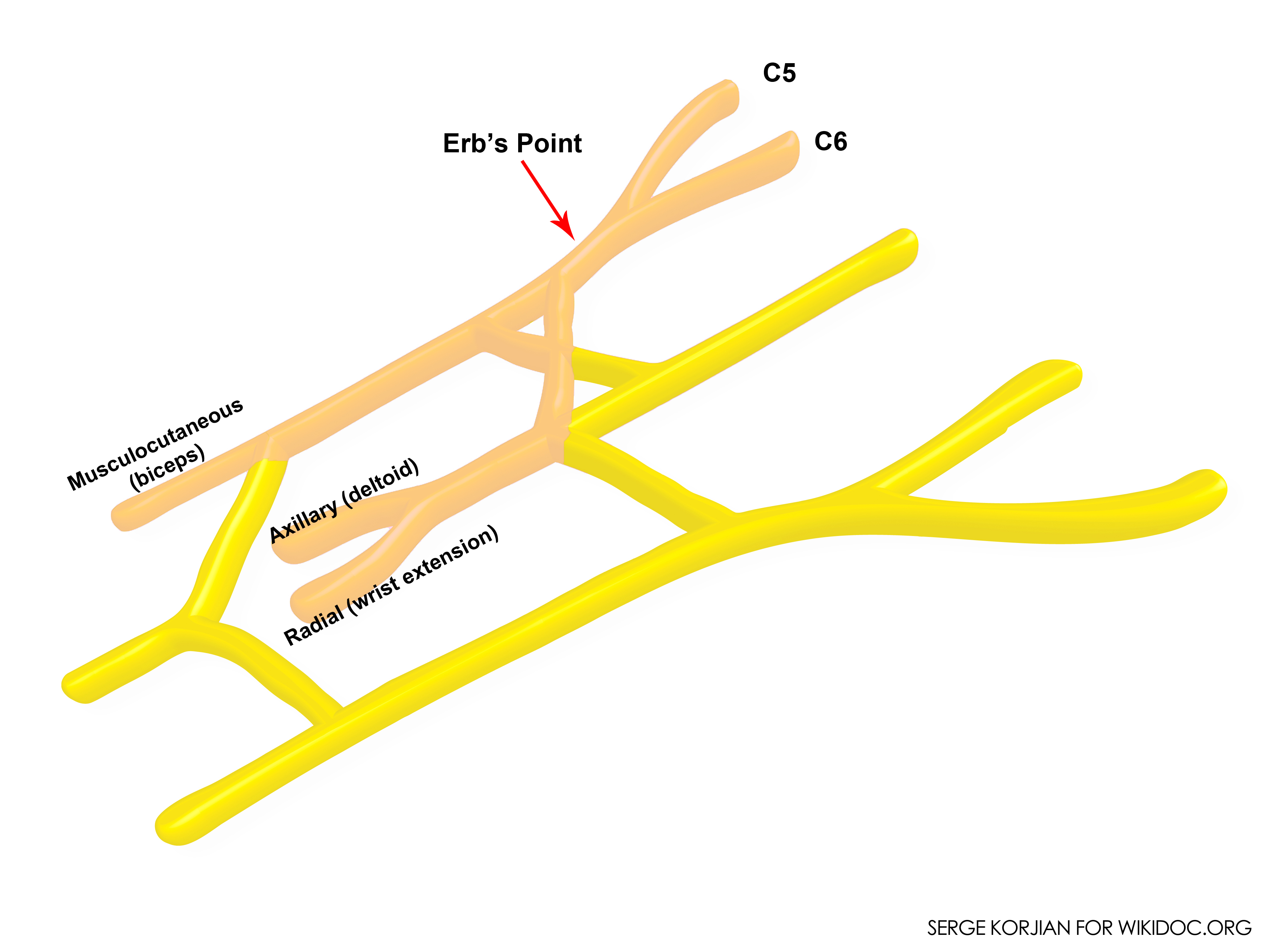WBR0472
| Author | PageAuthor::William J Gibson |
|---|---|
| Exam Type | ExamType::USMLE Step 1 |
| Main Category | MainCategory::Anatomy |
| Sub Category | SubCategory::Musculoskeletal/Rheumatology, SubCategory::General Principles |
| Prompt | [[Prompt::A newborn female was born via normal vaginal delivery to a 32 year old prima gavid woman. The pregnancy was complicated by gestational diabetes for which the mother took insulin before meals. The child now has an adducted, pronated left arm with flexion of the wrist. The right arm is normal. Damage to which of the following nerves most likely caused this patient’s condition?]] |
| Answer A | AnswerA::Axillary Nerve |
| Answer A Explanation | [[AnswerAExp::Incorrect: The axillary nerve is not typically directly damaged in Erb’s palsy. However, the axillary nerve can no longer conduct nerve signals as the cervical roots that give rise to it are disrupted (C5-C6). The axillary nerve innervates the deltoid muscle, which is responsible for abducting the arm. Thus, patients with Erb’s palsy cannot abduct the affected arm.]] |
| Answer B | AnswerB::Radial Nerve |
| Answer B Explanation | [[AnswerBExp::Incorrect: The radial nerve is not typically directly damaged in Erb’s palsy. However, the radial nerve can no longer conduct efferent nerve signals to the wrist extensors, as the cervical roots that give rise to the radial nerve are disrupted (C5-C6).]] |
| Answer C | AnswerC::C5-C6 |
| Answer C Explanation | [[AnswerCExp::Correct: The superior trunk of the brachial plexus is most often injured in Erb’s palsy at the eponymous Erb’s point, the union of the C5 and C6 nerve roots (see image). The patient will typically exhibit the classic "waiter's hand" appearance due to paralysis of the biceps, deltoid and wrist extensors.]] |
| Answer D | AnswerD::C6-C7 |
| Answer D Explanation | AnswerDExp::'''Incorrect:''' C6 is often affected in Erb’s palsy, but C7 is not. Lesions of the C7 nerve root will affect the triceps and finger extension. |
| Answer E | AnswerE::C8-T1 |
| Answer E Explanation | [[AnswerEExp::Incorrect: The C8-T1 nerve roots give rise to the Ulnar nerve. The Ulnar nerve is responsible for medial wrist and finger flexion. Lesion of the Ulnar nerve can occur due to fracture of the medial epicondyle of the humerus. This type of lesion will cause weakness of handgrip and radial deviation of the hand on wrist flexion.]] |
| Right Answer | RightAnswer::C |
| Explanation | [[Explanation::The patient in this vignette is suffering from Erb’s Palsy, a condition in which the upper trunk of the brachial plexus is injured. Erb’s palsy is caused primarily by severe traction of the shoulder (shoulder dystocia) during birth. The most commonly involved root is C5 (aka Erb's point: the union of C5 & C6 roots)[8] as this is mechanically the furthest point from the force of traction, therefore, the first/most affected. The nerve roots normally involved are C5 and partly C6. Symptoms include paralysis of the biceps (through the musculocutaneous nerve); the brachioradialis (through the radial nerve); and the deltoid (through the axillary nerve). The effect is called "Erb's palsy" (see image). Typically, an affected person's arm hangs at the side with the hand rotated medially, like a waiter preparing to accept a tip; hence the colloquial name "waiter's tip hand". Some babies recover on their own, while others require surgical intervention for proper shoulder function. |
| Approved | Approved::Yes |
| Keyword | WBRKeyword::Brachial plexus, WBRKeyword::Brachial, WBRKeyword::Plexus, WBRKeyword::Nerve, WBRKeyword::Erb's, WBRKeyword::Palsy, WBRKeyword::Erb's Palsy, WBRKeyword::Arm, WBRKeyword::Upper Limb, WBRKeyword::Muscle, WBRKeyword::Limb |
| Linked Question | Linked:: |
| Order in Linked Questions | LinkedOrder:: |
